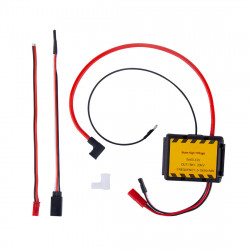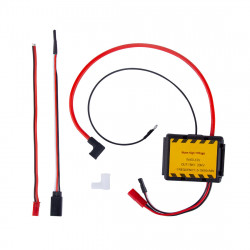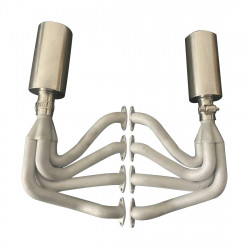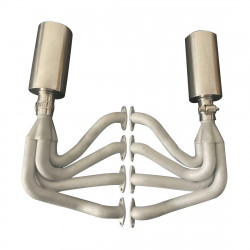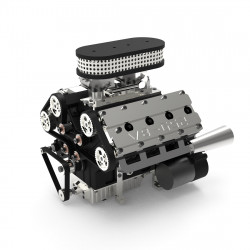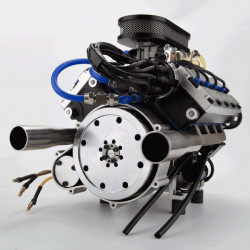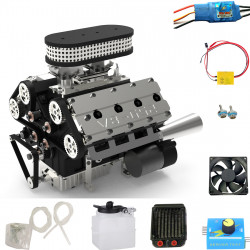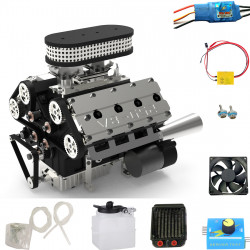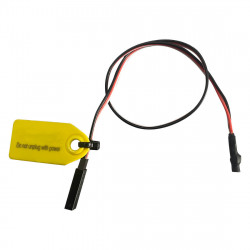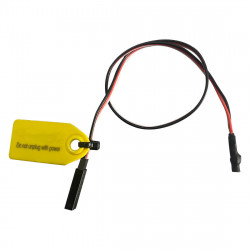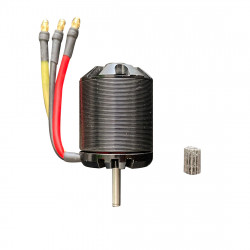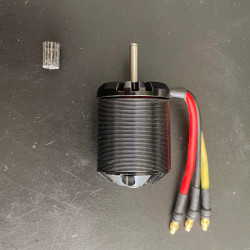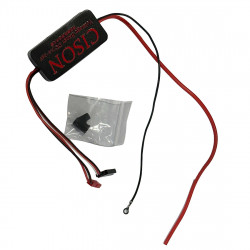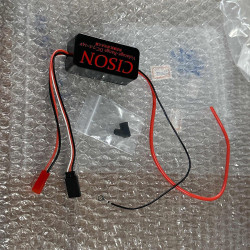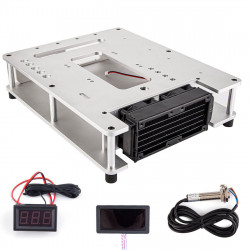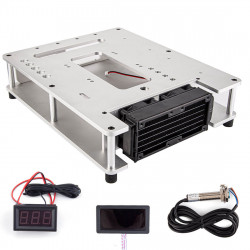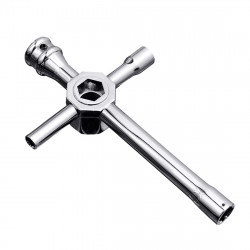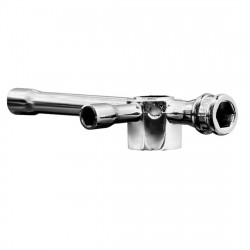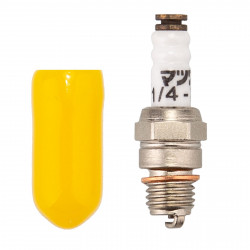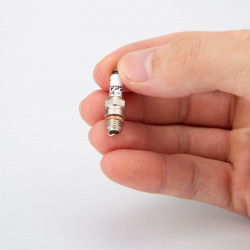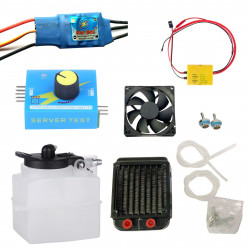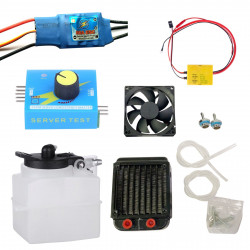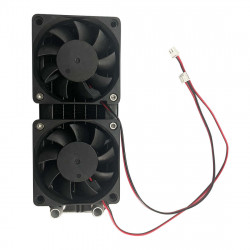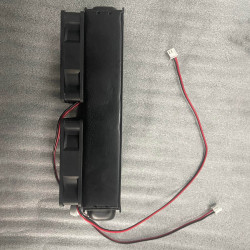Model Car Engine Detailing – What Do You Need and How to Do It Yourself?
Are you prepared for a unique challenge in car detailing? Model car engine detailing is a lot of fun on a smaller scale. First and foremost, your experience detailing the engine of a model automobile will be greatly impacted by the scale you choose. A scaled-down version of a realistic-looking engine cannot fit under the hood of some of the smallest model cars. For instance, 1:64 scale model vehicles, which are around 3 inches long, are a common choice for kids' toys since they are the ideal size for small hands. A tiny toy car is unlikely to have a true-to-detail engine with a crankshaft, connecting rods, and pistons.
Choose the larger 1:4, 1:8, or 1:12 scale model automobiles instead. Certain models are skillfully designed to produce a small version of a full-size car. An engine with all of its functional parts and components is part of this attention to detail. Additionally, standalone model vehicle engine kits are available for purchase. This is if you wish to improve your detailed abilities and construct a functional engine. An excellent view of the engine is provided by these translucent models. It helps you better comprehend the process of cleaning a real-size engine because you can see how everything works.
Supplies You Need for Model Car Engine Detailing
Model vehicle engine detailing supplies are comparable to those needed for model car interior detailing. To clean belts, exhaust valves, fans, spark plugs, cylinders, and other parts, you just need to make miniature versions of vehicle engine detailing tools. The engine of a model automobile constructed from a kit is not powered by gasoline. As a result, you can get rid of an oil buildup without using a degreaser. Nonetheless, the following materials will be helpful:
- Compressed air (canned air for cleaning keyboards and electronics is perfect)
- Cleaning wipes
- Selection of fine brushes
- Toothpicks
- Microfiber cloths
- Small bottle brush or toothbrush
- Tweezers
- Cotton swabs
- Desktop craft lamp or similar
- Magnifying lens
- Hairdryer
- Engine dressing or detailing spray
The majority of arts and crafts stores carry a variety of items that are appropriate for cleaning the engines of model cars, so you can pick up supplies there. To clean small parts, look for paintbrushes that are small and pointed. As an alternative, you can use disposable mascara wands or discarded makeup brushes as tiny details brushes.
Steps to Take for Model Car Engine Detailing
A fantastic immersive experience that closely resembles the procedures of actual engine cleaning is model automobile engine detailing.
Get Your Workstation Ready
It's crucial to be prepared. Having enough room to arrange all of your cleaning materials and equipment in convenient locations makes model car engine detailing more pleasurable and soothing. The ideal worktop is a sizable, clutter-free table or desk. Additionally, good lighting is crucial. When cleaning delicate areas of the model car engine, it helps prevent eye strain. Choose a design that makes it easy to direct the light source, like a head torch or an angled desk lamp.
Note the Different Types of Model Car Engines
Before you begin detailing a model vehicle engine, keep in mind that the much smaller non-functioning engines are sometimes assembled with glue and lack a "running" engine. To avoid loosening the adhesive and dislodging small parts of the model engine, stay away from using any cleaning solutions, direct heat, or water.
On the other hand, functional model automobile engines typically have powerful pistons and cylinders, cooling fans, a moving crankshaft, interactive cables, and a working distributor. Even though pieces are frequently screwed or snapped together without the use of adhesive, care must still be taken when detailing to avoid displacing any of the smaller parts. To produce a genuine engine sound, cables are connected to battery pack distributors to turn the engine fans.
Model car engine detailing is a complex process that calls for patience and attention to detail because some miniature vehicle engines are made with over 300 pieces. Cleaning a real-size engine follows the same guidelines. Contact the professionals if you need assistance.
Main Procedures of Model Car Engine Detailing
It is beneficial to adhere to certain fundamental engine detailing techniques even if you are not working on a real-size engine.
- Make sure the engine is off before beginning to detail the engine of a model car. A battery-powered engine that rotates to simulate the sound of a real car engine is a feature of certain working scale model cars or engine kits. Before beginning any detailed work, turn everything to "OFF" to preserve the model car's functionality.
- Any electronic modules should be covered. Any motorized parts, exposed components, and LED-illuminated spark plugs should be covered with plastic wrap before you wash out or lightly mist the dustiest regions of your engine. Take the appropriate safety precautions, just as you would if you were pressure washing your car's engine.
- Remove all visible dirt with your fine brushes. Compressed air can be used for "fake" model vehicle engines made using glue or other adhesives, and it will remove any hidden dust particles from more difficult-to-reach places.
- Use your cleaning wipes as you would for a typical automobile engine to get rid of thick layers of oil and grease if the dirt particles are more difficult to remove. A little mist of water can help clean dirty surfaces. After that, you can use a fine paintbrush or a disposable mascara wand to stir up the debris. Oil and grease might make cleaning your car engine difficult if you ever decide to do it yourself. See our suggestions for steam cleaning engines.
- Use a toothbrush or a tiny bottle brush to go into nooks and crannies. You would use a pipe cleaner to accomplish the same task on a real-size engine.
- Use a microfiber towel to wipe away the dirt that has been released. When detailing the engine of a model car, you can also use the bottle brush to reach difficult-to-reach areas by wrapping a portion of the microfiber cloth over it.
- It's crucial to completely dry off any water you may have used to clean the model car engine's dirty areas. Make use of a fresh, dry microfiber cloth. Cotton swabs can also be used to absorb extra moisture from the engine's tiny crevices. Use a hair dryer set to low heat as an alternative.
Polish the Engine for an Immaculate Finish
To give the engine a like-new sheen after the engine region has been thoroughly cleaned and dried, apply an engine dressing or detailing spray. Metal, plastic, and rubber components can be used to construct model vehicle engines. Choose an appropriate polish that won't deteriorate any of the components after verifying the materials utilized.
Post-Detailing Procedures
Keep the engine as dust-free as you can after detailing it. If you have an engine-only kit without a vehicle bonnet to shield it from dust and grime, this is very crucial. Make use of a storage bag or breathable cover that lets moisture escape.
ENJOMOR V8 Engine, A Powerful Gasoline Engine Model
Is the newly introduced ENJOMOR V8 engine the most potent?
A water-cooled engine with eight cylinders and four strokes has a peak output of 3.8 KW. It is a unique design that can be used to power small vehicles, boats, and aircraft in different situations.
Nine characteristics of ENJOMOR V8 engine
1. Three piston rings, one of which is an oil ring made using thirty-two methods, guarantee the cylinder's pressure.
2. A single-piece cast crankshaft with a 1:14 compression ratio, a high-hardness piston cylinder liner, and full-bearing crankshaft support.
3. The machine operates intuitively thanks to its exposed timing belt design.
4. Oil is drawn to the top of the machine by an oil sump oil pump, providing independent lubrication.
5. Lubricating the reciprocating cam chamber.
6. The side water cooling pump distributes heat efficiently.
7. 3548 brushless motor starts with one key.
8. Complete the CNC aluminum cylinder block.
9. The actual engine gains effects from integrated exhaust manifolds.
The final seven of the initial batch are for sale; the release is limited to 2022. In the middle of November, the engine will be shipped. Next year, we will have to wait for the next batch.
Conclusion
For auto aficionados, the process of detailing a model car's engine is entertaining and instructive. However, your cleaning equipment must be acceptable in size and capable of handling delicate parts if you wish to do it. You can observe the engine's operation during the detailed processes. Additionally, they closely examine its characteristics and capabilities. Above all, this can be helpful if you choose to try cleaning your actual car engine.
